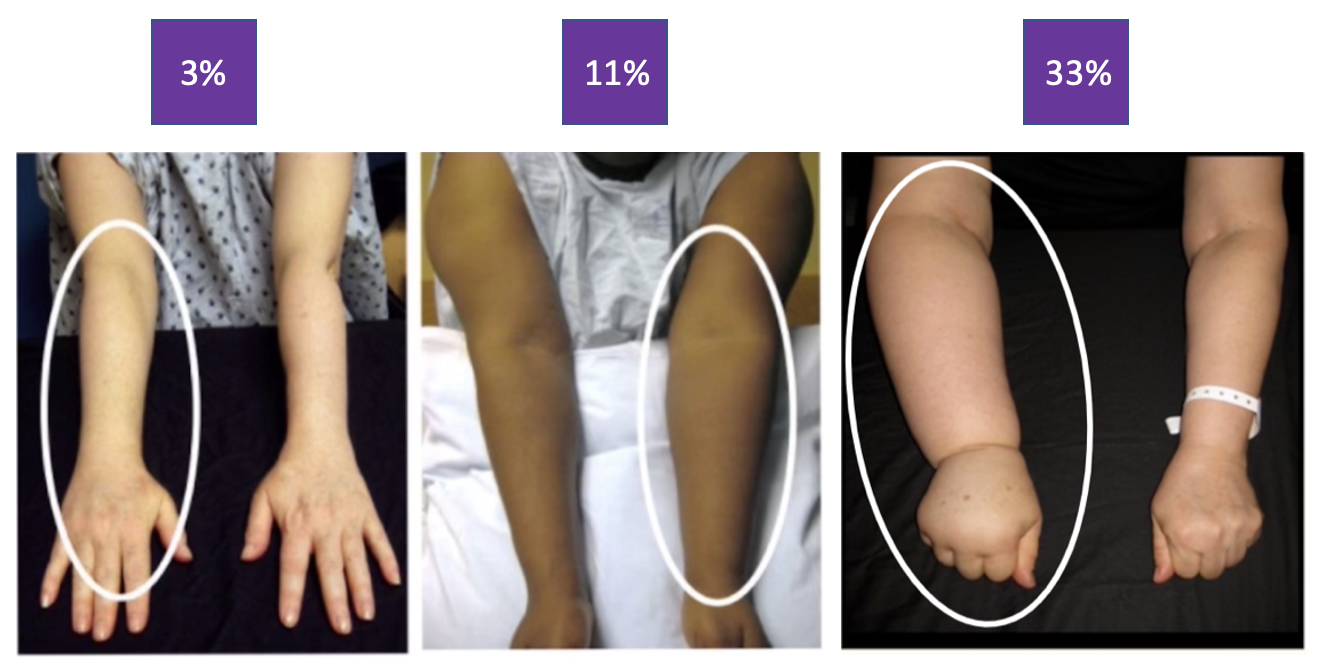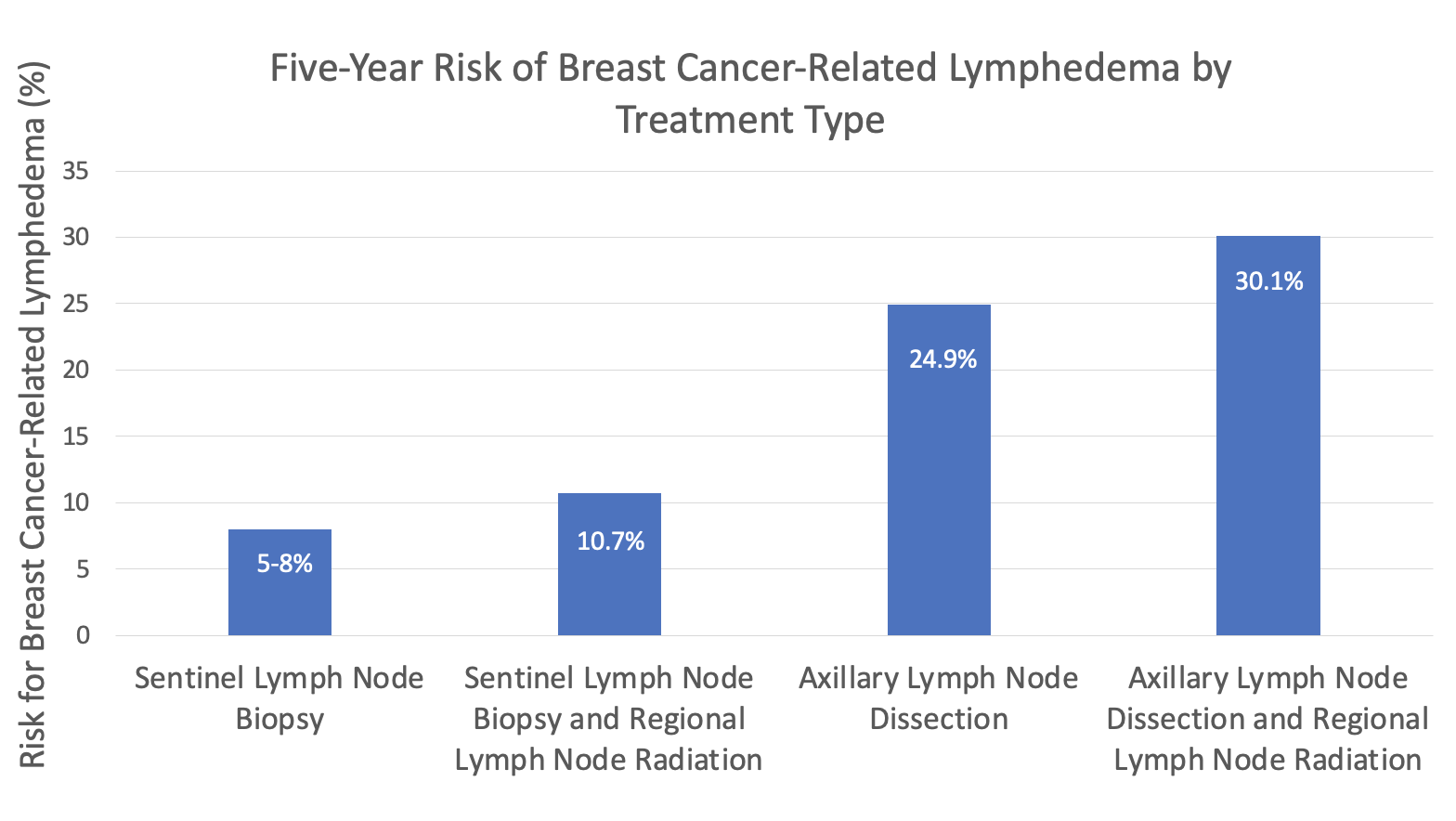What We Study
Our research program focuses on Breast Cancer-Related Lymphedema. Patients who have undergone surgery or radiation therapy to the lymph nodes for breast cancer (note that radiation to the breast alone does not increase risk of lymphedema) are at risk of developing a form of swelling called lymphedema, a lymphatic system disease.
The lymphatic system collects extra fluid, as well as proteins and other substances, from the body's tissues. This fluid is known as lymph. If the flow of lymph in the body is blocked, fluid can collect in the tissues under the skin. The resulting swelling is lymphedema. The condition can occur anywhere in the area of the body that was treated. Breast cancer-related lymphedema can occur in the breast, chest wall, arm and/or hand.
For more information on lymphedema symptoms,diagnosis, and our clinic, click below.

Different levels of swelling from lymphedema
What We Know
Lymphedema Development and Risks
Not everyone who undergoes breast cancer treatment will develop lymphedema. The graph below shows risk for developing lymphedema based on treatment type. Risk factors for lymphedema include skin infections (cellulitis) and being overweight (>25 kg/m2 BMI) at the time of breast cancer diagnosis further the risk for breast cancer-related lymphedema.

George E. Naoum; Sacha Roberts; Cheryl L. Brunelle; Amy M. Shui; Laura Salama; Kayla Daniell; Tessa Gillespie; Loryn Bucci; Barbara L. Smith; Alice Y. Ho; Alphonse G. Taghian. “Quantifying the Impact of Axillary Surgery and Nodal Irradiation on Breast Cancer-Related Lymphedema and Local Tumor Control: Long-Term Results From a Prospective Screening Trial.” Journal of clinical oncology : official journal of the American Society of Clinical Oncology vol. 38,29 (2020): 3430-3438. doi:10.1200/JCO.20.00459
Sentinel Lymph Node Biopsy is a biopsy taken of the sentinel node or nodes to determine the extent of breast cancer. The sentinel nodes are the first lymph nodes into which a tumor drains from the breast.
Regional Lymph Node Radiation includes radiation to the lymph node regions around the breast, including the axillary nodes (under the arm), the supraclavicular nodes (above the collar bone) + or - internal mammary nodes (near the center of your chest). It should be noted that breast radiation alone does not increase lymphedema risk.
Axillary Lymph Node Dissection occurs when the patient has multiple lymph nodes containing cancer cells. The surgeon removes more nodes under the arm to see the extent of the cancer in the lymph node region (usually 10 or more lymph nodes). The surgeon does not remove all the lymph nodes under the arm during an axillary lymph node dissection.
Contact your treatment team immediately if an area of your arm or chest becomes red, painful or swollen, or if you have fever or chills. These symptoms can be signs of infection, which should be treated immediately.
